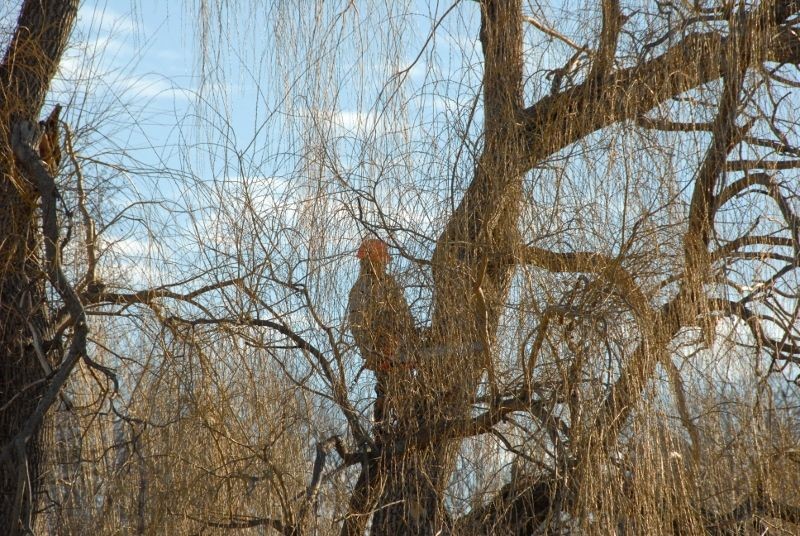This is the second half of a two part series on cabling and bracing. This article focuses on bracing, and what this support method entails.
Cabling and bracing are practices that can help reinforce the structural integrity of a tree. They work separately, but are most effective when used together. Having already explored cabling in the first half of our series, we now turn our attention to the subject of bracing.
What Is Bracing?
Bracing is the installation of steel rods in a tree. It is often performed in limbs, leaders, and trunks in order to strengthen weak crotches, repair splits, and provide structural support for the tree. Bracing rods can also be used to separate encroaching limbs, or to hold them together.
Types of Rods:
There are two major types of steel rods used in bracing: lag-threaded rods (which are also referred to as wood screws), and machine-threaded rods. Lag-threaded rods have fewer, and deeper threads per inch than machine-threaded rods. They are ideal for installing in small limbs, and are best utilized in tree species made up of harder wood, such as oak, hickory, sweetgum, elm, and beech. Machine-threaded rods are most effective when used in decayed wood, or in larger trees, and tree species with softer wood characteristics, such a poplars, conifers, tuliptrees, and willows.
Proper Bracing Installation
The condition of a limb, leader, or trunk determines what type of bracing rod is to be used during the installation. Lag-threaded rods are effective at supporting small limbs, but they should not be installed in any limbs, or leaders that exceed eight to ten inches in diameter. They should also never be used on any limbs or leaders that exhibit signs of decay, as they can become unstable, and promote the spread of decay, further compromising the infrastructure of the tree.
When installing a lag-threaded rod, drill a hole in the tree that is approximately 1/16 to 1/8 inch smaller than the diameter of the rod being used. Once a hole has been created, the rod should be threaded through the opening using a pipe wrench, and fastened to the tree using a combination of washers and nuts. Lag-threaded rods can be broken off after they have been installed in order to prevent hardware exposure.
When installing a machine-threaded rod, drill a hole that is 1/16 to 1/8 larger than the diameter of the rod being used. Be sure to use a drill bit that is of a sufficient enough length to penetrate all the way through the limb, leader, or trunk. Do not attempt to create a passageway by drilling from opposite ends of the tree. It can be difficult to line up the holes correctly, and create additional stressors in the tree. Once a hole has been established, the rod can be fed through the opening, and bolted on each end using heavy-duty washers and nuts. Any excess rod that is exposed beyond the tree should be peened, and treated with rust preventative paint.
For crotches that are not weakened, or split, a single bracing rod can be installed above it for support. Larger trees may require the installation of several bracing rods. When a single bracing rod has already been established, any additional rods should be installed below the crotch, and through any split that is present. Multiple rods can help reinforce a split, or weakened crotch, providing the tree with additional structural support, and strength. When tending to a split crotch, bracing rods should be installed at six to eighteen inch intervals along the entire length of the split. This will help draw the leaders together, effectively closing the wound. If multiple bracing rods are to be used, they should be installed in a staggered formation in order to prevent the development of decay columns in the tree.
Bracing rods can help provide structural support to trees, but despite their many benefits, they cannot always be relied upon to make a hazardous tree safe.
